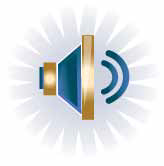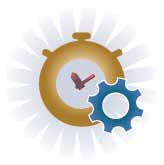School CIO: It’s Bigger Than the Backbone: 4 Steps to Prepare Teachers for CCSS Assessments

Tech & Learning has published ongoing reports on the continued concern about the technological infrastructure and the basic availability of technology for PARCC and Smarter Balanced assessments. But how can district leaders prepare their teachers for this transition? Below are four strategies that can be used to prepare your teachers for these next-generation assessments.
1 Prepare Teachers To Become EdTech Leaders

In order for students to be prepared for these digital assessments, they need to be comfortable with and proficient at using technology in meaningful and effective ways. This means teachers must also become comfortable with using these tools in intentional and purposeful ways. This begins with good professional learning that models best practices in technology. For example, don’t use a traditional lecture environment to teach teachers how to use technology. Flip your PD by creating short videos showing technology in the classroom. Use blended models that incorporate Google Hangouts and Twitter hashtags. Leverage Skype to connect with other educators around the world as well as to bring experts into the classroom. Encourage your teachers to build their professional learning networks using these tech tools. By immersing teachers in technology via professional learning, they can become true edtech teacher leaders in their classrooms as well.
2 Use Technology as a Content Learning Tool
When technology is seamlessly integrated into instruction, students will be better prepared for a later digital assessment. One effective model for this seamless integration of technology is the flipped classroom. The flipped classroom is more than just pushing out a collection of short videos. In this model, students learn using a variety of digital content, such as virtual labs, videos, and even games outside of physical class time. During class, the teacher works on the application of this content in a variety of instructional activities. If your teachers aren’t quite ready for the flipped classroom model, they can still use digital tools as content learning components. For example, students might play a digital game based on the Bill of Rights. The teacher can then monitor and support students as they play, and even find ways to differentiate the game for specific students. If a student is successful early on, she might continue on to a more challenging task. If a student is not as successful, the teacher might pull that student aside for more one-on-one instruction. Activities like these include clear intention and purpose for using the tool. Technology is being used not only to learn content, but to gain the digital skills needed for high-stakes digital assessments.

3 Use Technology for Assessment
Another part of intentionally integrating technology is using it for meaningful assessment. This intentional assessment moves beyond summative, multiple-choice tests that don’t truly measure higher-order learning. Instead, teachers can use these tools for assessments that measure critical thinking, problem solving, creativity, and collaboration with the content. Technology can be integrated into teaching through formative assessments that can be used to inform instruction and differentiation. For example, many teachers use “clickers” or online survey tools like Poll Everywhere when giving math problems during class. They might add audio and video recording software like Voice Thread to have students reflect on what they learned as well as to elicit their questions. Students can use Prezi to make presentations to show their parents what they have learned. Google Sketchup might be used to show knowledge of ratios, proportion, and measurement. Web site building tools like Weebly or digital posters like Glogster can allow summative assessment to be more public and meaningful. These are just a few examples of how teachers can integrate technology to create more meaningful assessments year-round, not just at test time.
Tools and ideas to transform education. Sign up below.

4 Integrate Test Preparation into Every Day Lessons
Traditionally, teachers take a week or two out of the instructional schedule right before high-stakes assessments to prepare students. This is not out of bad intention; teachers want to ensure that students are adequately prepared for the assessment. However, instead of this isolated approach, teachers can prepare students for high-stakes tests more meaningfully by integrating CCSS-type questions into everyday curriculum. For example, teachers can use Edmodo or Socrative for formative assessments that look just like the end-of-course assessment in any course. Or a teacher might use Poll Everywhere to ask a multiple-choice or short-response question to check for understanding at the end of a lesson. By embedding “test prep” into the curriculum, not only are teachers preparing students for the PARCC or Smarter Balanced assessments, they are also using it as a meaningful component of instruction and assessment. This changes the teaching model from isolated “test prep” to ongoing opportunities to align test questions to the learning happening in the classroom.

Common Core assessment readiness isn’t just about being prepared in terms of the infrastructure. It’s about exposing students to meaningful technology integration and using technological assessments in a meaningful and intentional way. Preparing students now, by helping them to think purposefully about how to use technology and embedding standardized testing prompts into everyday instruction, will make them more than ready to take on the “next generation” of assessments.
Andrew Miller serves on the National Faculty for the Buck Institute for Education and ASCD.
